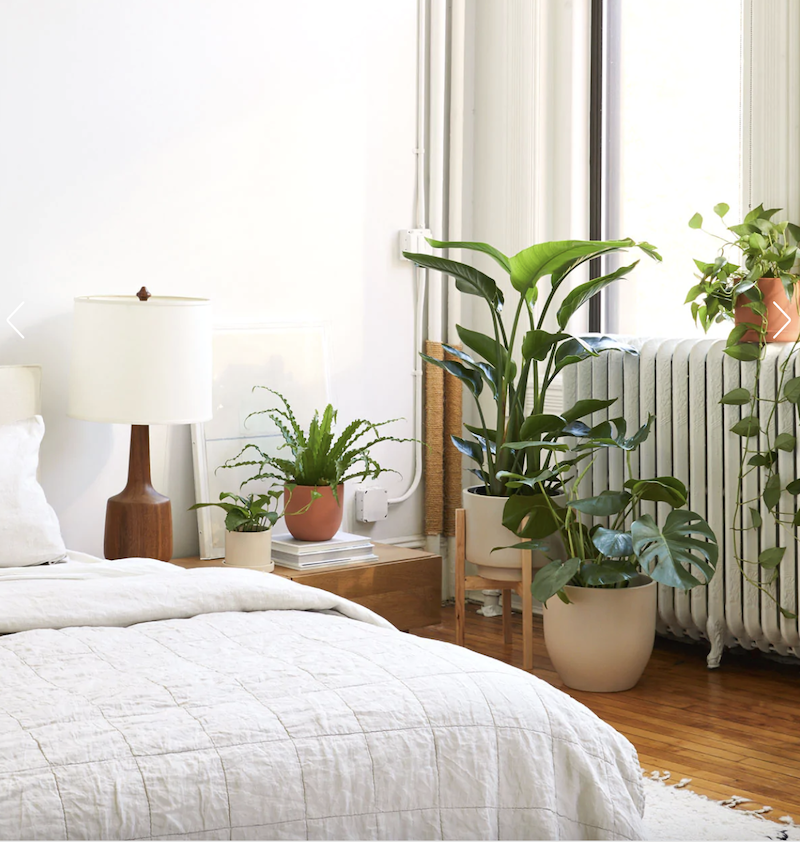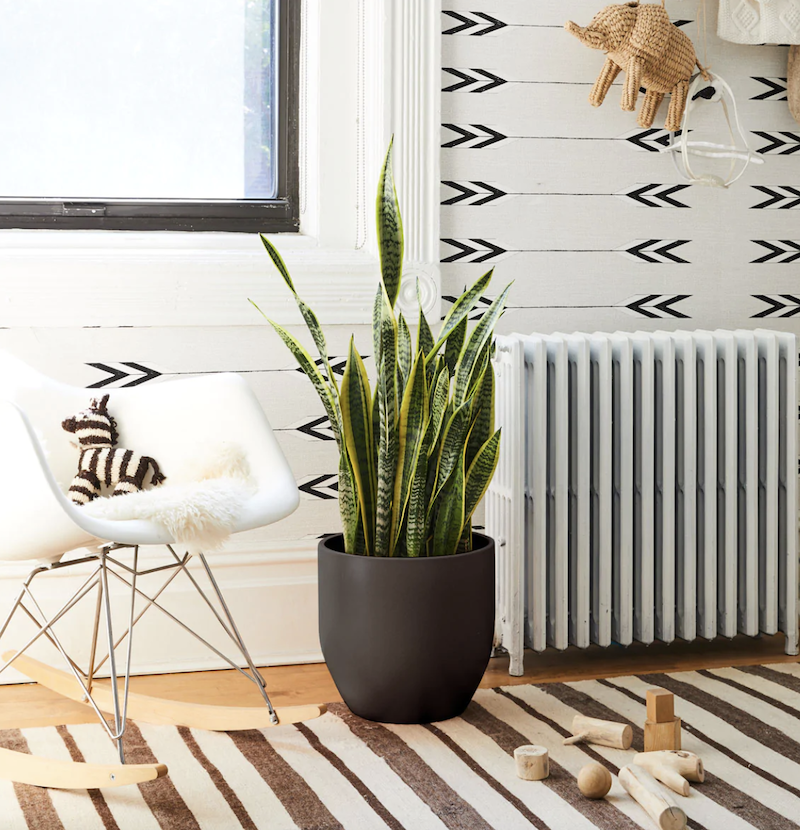Bring the Outdoors In With Common Tall House Plants
For many of us the seasons are changing, so it’s time to bring the outdoors in. Sure, artificial trees can give off a certain kind of cheerful vibe, but nothing beats the real thing.
After all, we know that people who spend more time in nature become happier adults, so why not enjoy some plant life all year with common tall house plants you can care for inside of your home?
Image via The Sill
It’s true, being in touch with nature and plant life can be mood boosting because of our innate need to be connected to other living things. Plants also help improve indoor air quality. Not to mention, that studies have shown even brief exposure to plant life, like touching real foliage, can elicit an unconscious calming effect.
“Spending more time in natural settings, whether that be in a park or filling your home with plants can help reduce stress and depression which helps to place us in a better state of mind,” says Paris Lalicata, Head of Plant Education at The Sill. “Outside of visual exposure, nurturing and tending to your own plant collection can be mood boosting.”
Calming and mood boosting — we’ll take it!
Lalicata recommends some favorite common tall house plants. Plus you’ll find care tips along with a guide to which room is best for each plant.
Indoor Plant Care Tips and Which Rooms are Best
Intimidated by the thought of having another living thing to care for? Or are you already an indoor plant pro?
Lalicata shares a difficulty score from 1-10 (1 is easy, 10 is hard) so you can find the plant that best matches your green thumb abilities.
A big factor in plant parent success involves proper plant placement, light exposure, and appropriate watering. Plants can “drown” from too much water and dry out from too little, so a moisture meter and a precise watering can will help.
Here are more useful tips from Lalicata, including where to place the common tall house plant of your choice.
Majesty Palm: Difficulty Level 7
They are easy to care for with the right balance of care but can shed leaves quickly if conditions aren’t favorable. What may be challenging is troubleshooting through plant symptoms since Palms tend to yellow for almost every ailment they have.
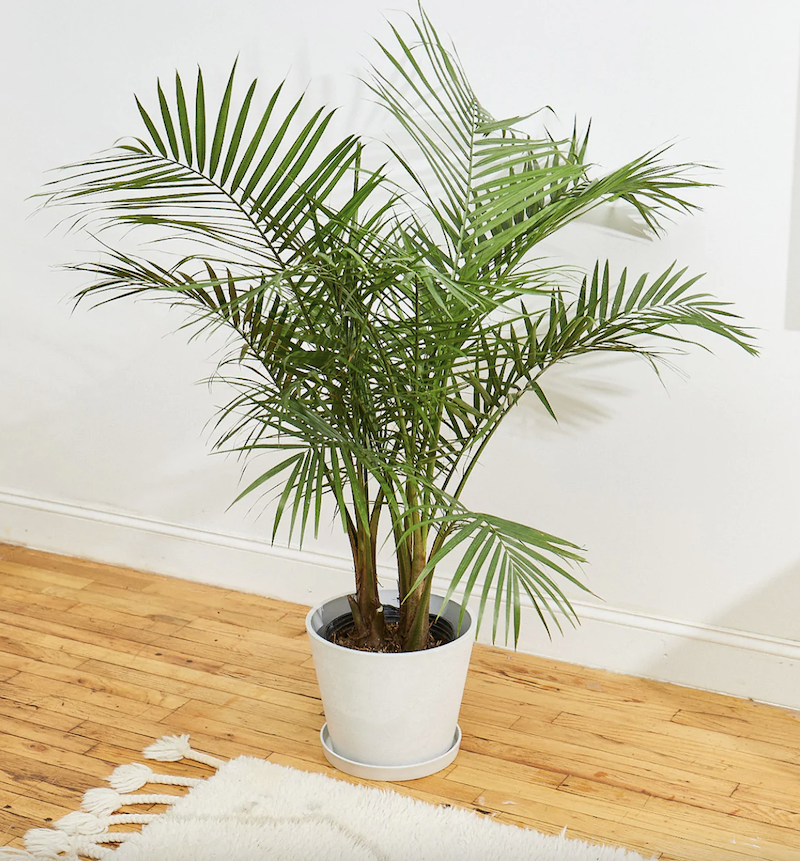
- Light: Thrives in bright indirect light, but can tolerate medium indirect light.
- Watering: You can see yourself watering this palm tree every 1-2 weeks allowing half of the soil to dry out between waterings.
- Best Room: Good candidate for areas in the home that maintain high humidity levels like bathrooms.
Monstera Deliciosa: Difficulty Level 5
Overall, the Monstera is easy to care for as long as proper lighting and water are given. What may be challenging for some is maintaining the size and shape of the plant overtime depending on how they want the plant to look in their indoor space.
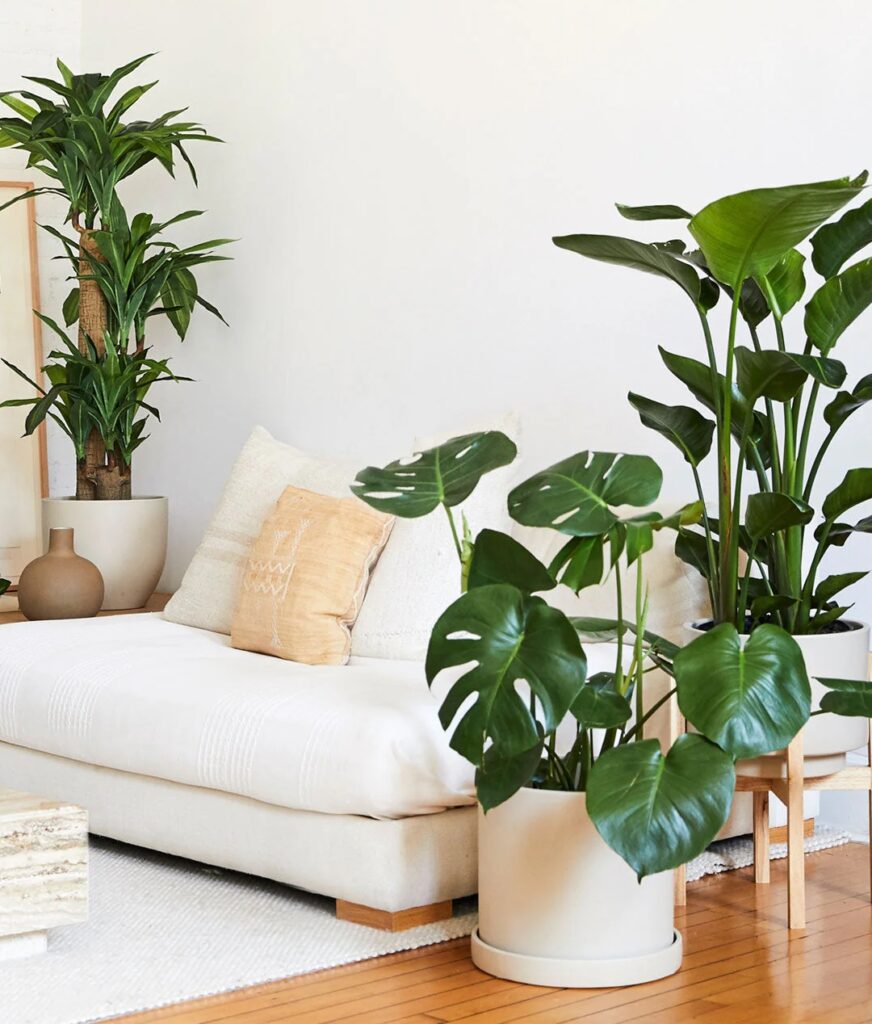
- Light: Thrives best in medium-bright indirect light. Can withstand direct sunlight from the morning hours, but not strong direct afternoon sun.
- Watering: It’s best to water once the soil dries out on a 7-10 day basis depending on conditions in the home.
- Best Room: The Monstera is a perfect statement plant to place as a focal point in your living room.
Bird of Paradise: Difficulty Level 5
Bird of Paradise plants are also generally easy to care for as long as proper lighting and water are given. This tropical plant has a tendency to grow quite large, so be sure to give it plenty of space.
- Light: Thrives best in bright indirect light to a few hours of direct sunlight. These large plants will not tolerate lower light conditions.
- Watering: Tropical plants prefer slightly moist soil. It’s best to water once the soil dries out on a 7-10 day basis depending on conditions in the home.
- Best Room: Any area in the home that can provide bright sunlight to some direct sun directly in a window. South or West facing windows are ideal.
Fiddle Leaf Fig: Difficulty Level 8
The Fiddle is known to be a more finicky plant to maintain in the home due to needing more stable care and environment. But with proper care, this plant can mature into a gorgeous indoor tree.
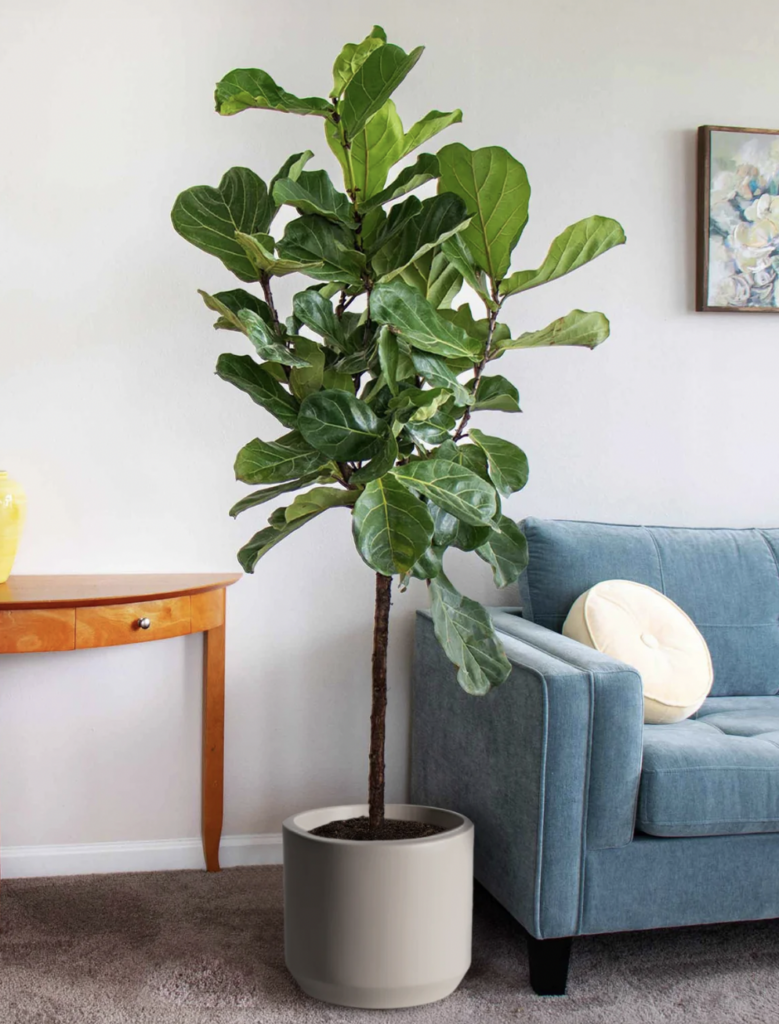
- Light: Thrives best in bright indirect sunlight to a few hours of direct sunlight. This plant will not tolerate lower light conditions.
- Watering: It’s best to water once the soil dries out on a 7-10 day basis depending on conditions in the home. Too little water or extremely dry conditions will cause those beautiful big leaves to fall away.
- Best Room: These big leaf plants will love any area in the home that can provide bright light to some direct sun directly in a window. A South or West facing bright window is ideal.
Sansevieria Laurentii: Difficulty Level 1
The Sansevieria Laurentii, also known as a snake plant, is resilient and low maintenance plant. It is also perfect for beginners. It’s drought-tolerant and can withstand varying light levels from full sun to low light.
- Light: Thrives best in medium-bright light conditions, but can tolerate low light areas in the home.
- Watering: It’s best to water once the soil dries out completely which could be on a 1-2 week basis. The snake plant can certainly go as long as 3 weeks before its next watering.
- Best Room: Any room in the home, especially if you are looking for plants for low light areas like in an office or hallway.
Dracaena Marginata: Difficulty Level 2
Another popular plant, dracaena are a very tolerable species when it comes to light and watering.
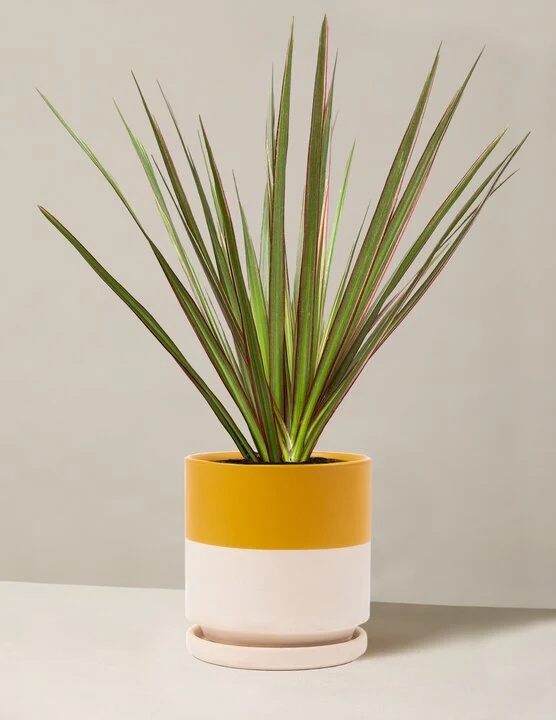
- Light: Thrives in bright indirect light, but can tolerate medium to low indirect light.
- Watering: It’s best to water once the soil dries out on a 7-10 day basis depending on conditions in the home.
- Best Room: Ideal candidate for bedrooms, living rooms, and offices.
Keep in mind, plants kept in lower light situations will be slow growers with smaller leaves of less intense color.
And be sure to take a look at some plants to steer clear from, as they can be dangerous to kids and pets.
Whether you’re new to house plants or a seasoned plant parent, incorporating tall house plants into your home is an easy and rewarding way to bring the calming benefits of nature indoors. From purifying the air to boosting your mood, plants add beauty and life to your surroundings while helping you connect with the natural world—even in the heart of your home.
With these care tips and recommendations, you’ll be well on your way to creating a lush, inviting space. So, choose a plant that suits your style and abilities, and enjoy the many rewards of living with greenery.

